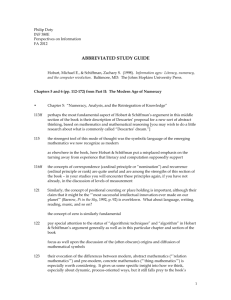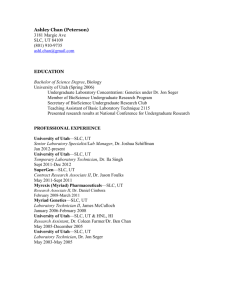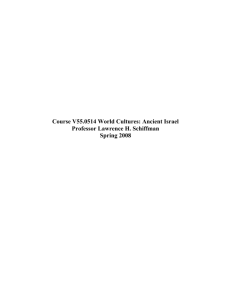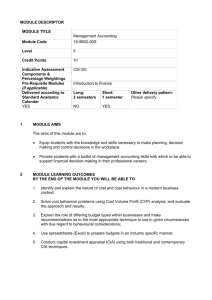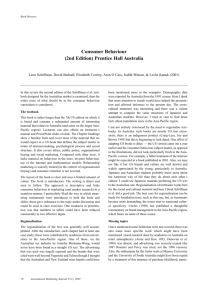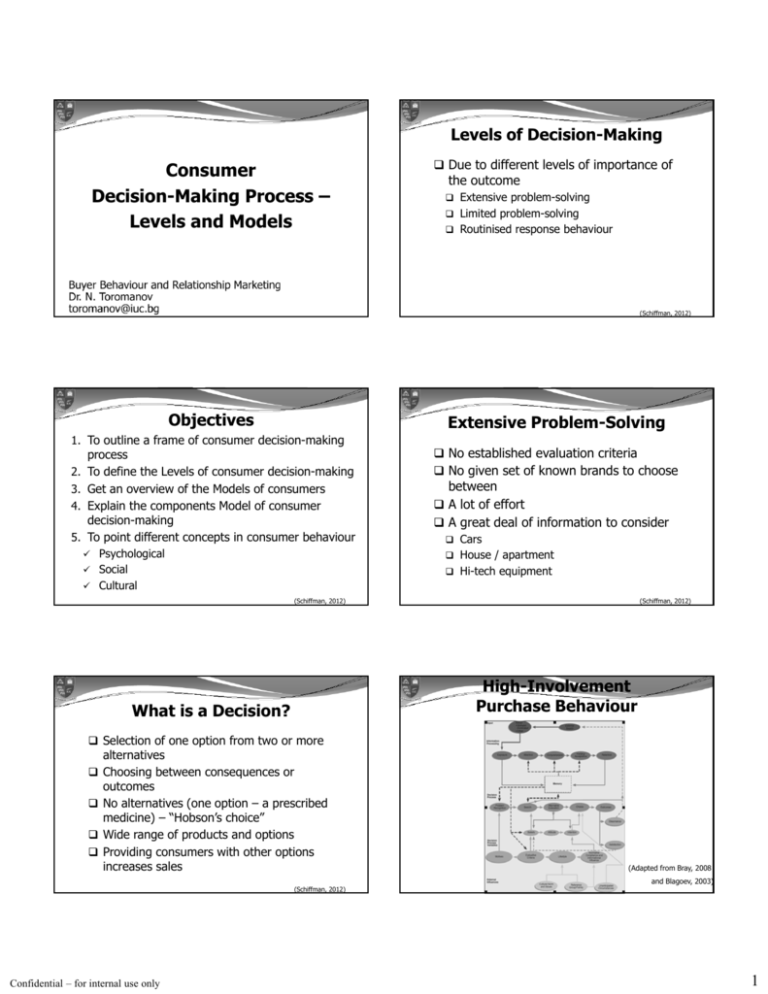
Levels of Decision-Making
Consumer
Decision-Making Process –
Levels and Models
Due to different levels of importance of
the outcome
Extensive problem-solving
Limited problem-solving
Routinised response behaviour
(Schiffman, 2012)
Objectives
Extensive Problem-Solving
1. To outline a frame of consumer decision-making
process
2. To define the Levels of consumer decision-making
3. Get an overview of the Models of consumers
4. Explain the components Model of consumer
decision-making
5. To point different concepts in consumer behaviour
Psychological
Social
Cultural
No established evaluation criteria
No given set of known brands to choose
between
A lot of effort
A great deal of information to consider
Cars
House / apartment
Hi-tech equipment
(Schiffman, 2012)
(Schiffman, 2012)
High-Involvement
Purchase Behaviour
What is a Decision?
Selection of one option from two or more
alternatives
Choosing between consequences or
outcomes
No alternatives (one option – a prescribed
medicine) – “Hobson’s choice”
Wide range of products and options
Providing consumers with other options
increases sales
(Schiffman, 2012)
Confidential – for internal use only
(Adapted from Bray, 2008
and Blagoev, 2003)
1
Limited Problem-Solving
There exist basic assessment criteria
A certain range of known brands
“Fine-tuning” between selected brands
Additional information needed to make
a choice
Economic View
“Economic man theory”
World of perfect competition
Consumers to make rational decisions
Awareness of all alternatives possible?
Correct ranking of all benefits?
Ability to identify best alternative?
Updates (home TV systems)
Laptops
Mobile phones
Limited by buying skills, reflexes and habits
Different in values and targets
Different in knowledge and wisdom
(Schiffman, 2012)
(Schiffman, 2012)
Routinised Response Behaviour
Experience with the product
Well established criteria
Known and narrow set of brands
Very little information sought or just a
review
Laundry detergents
Toothpaste
Soap
Passive View
Opposite of economic view
Consumer – under the influence of
promotional efforts of the companies
“impulsive and irrational purchasers”
Fail to see that consumer has the
central role (satisfaction of needs or
emotions)
Simplistic view over the consumer
Tea, coffee
(Schiffman, 2012)
Models of Consumers
4 views / perspectives on the process
of consumer decision-making
1.
2.
3.
4.
Emotional (Impulsive) View
Deep emotions, “magic” associated
Economic view
Passive view
Emotional view
Cognitive view
(Schiffman, 2012)
Confidential – for internal use only
(Schiffman, 2012)
with purchases – joy, love, fantasy, etc.
High involvement!
Go for it, You deserve it, Treat yourself
Less pre-purchase information
Current feelings and moods (state of
mind) – very important
(Schiffman, 2012)
2
Mood
Model of Consumer Decision-Making
Non-focused, pre-existing state,
influences the consumer at the point of
purchase
Lower in intensity, longer-lasting
Affected by the shop’s image or
atmosphere
Though, studies show, positive mood
(music, in-shop displays) are NOT
having a meaningful effect UNLESS
previously brand choice exists
3. Output (Post-Decision Behaviour)
Purchase
Post-purchase Evaluation
(Schiffman, 2012)
Input
Cognitive View
The Consumer – between Economic and Passive
“thinking problem solver”
Receptive or actively searching for products
and services
Information processors
Stop getting any additional info when they
think they have enough to make a choice
No perfect decisions!
Focuses on the process of searching for and
assessment of selected brands and outlets
(Schiffman, 2012)
Model of Consumer Decision-Making
1. Input (External Influence)
Marketing Mix
Product and branding
Pricing
Promotional mix
Distribution
Socio-cultural component
Family
Informal sources
Other non-commercials
social class
Culture and sub-culture
(Schiffman, 2012)
Process –
How Consumers Make Decisions
Psychological Field
Marketing Input (Company’s Efforts)
Socio-cultural Input (Environment)
2. Process (Consumer Decision-Making)
Psychological Field
Need Recognition
Pre-purchase Search
Evaluation of Alternatives
Experience
(Schiffman, 2012)
Confidential – for internal use only
(Schiffman, 2012)
Motivation, Perception, Learning,
Personality, Attitudes
Need Recognition
Pre-purchase Search (Internet)
Evaluation of Alternatives (degree of
perceived risk!!!) – list of brands or
criteria
Evoked Set
Inert Set
Experience (memory)
(Schiffman, 2012)
3
Evoked Set – Terminal Positions
Unknown due to selective exposure
Unacceptable – poor quality
Not having special benefits,
indifferent
Brands not clearly or properly
positioned
Perceived as unable to satisfy
needs
Output
Trial
Repeat Purchase
Long-term Commitment Purchases
Post-Purchase evaluation
performance matches expectations
exceeds expectations
below expectations
(Schiffman, 2012)
Consumer Decision Rules (1)
Heuristics / Decision strategies
Compensatory decision rule
Positive outweighs the negative
evaluate brands’ relevant attributes
and choose highest score
summarized score
weighted score – depending on how
we weight attributes
(Schiffman, 2012)
Models of Buying Behaviour
Economic model
Stimuli-response model
Stimuli-organism- response model.
(Bagozzi, 1986; Blagoev, 2003; East et al., 2013; Blythe, 2013; Payne et al., 2013),
(Schiffman, 2012)
Consumer Decision Rules (2)
Heuristics / Decision strategies
Non - Compensatory decision rule
no balance between positive and negative
conjunctive decision rule – minimal acceptable
level to cut-off for anyone attribute
disjunctive decision rule – minimal acceptable
level for each attribute to cut-off
lexicographic rule – first ranking attributes
according to relevance and importance
Economic model
people are rational in their behaviour as customers
want full-scale satisfaction
access to enough amount of information
well-informed and reasonable decisions.
considered as the rational type of (Simon, 1979)
Baines et al. (2011) made an interesting observation
that, immediately after the Second World War customers
were more likely to base their buying decisions following
more rational motives. People were seeking utility
satisfaction (their personal one) because of the need for
product and resources availability and inevitable best
cost-benefit analysis.
(Schiffman, 2012)
Confidential – for internal use only
4
Stimulus Response Model
The second model of buyer behaviour is the
stimulus-response model (Blagoev, 2003; East et
al., 2013; Payne et al., 2013). Also known as the
black-box model (Bagozzi, 1986; Blagoev, 2003) or
the reinforcement model (East et al., 2013, p.7)
It includes the relevant influence of the marketing
mix elements. The model presents how customers’
personal characteristics, the interpersonal and the
intrapersonal stimuli, and the consumer responses
interact with each other (Evans et al., 2013).
Behaviorism (Blythe, 2013).
References:
Anderson, T. (2003). An Introduction to Multivariate Statistical Analysis. New
York: John Wiley
2. Armstrong, G. & Kotler, P., (2013). Marketing: An Introduction. (11th ed.).
Harlow: Pearson Prentice Hall
3. Baines, P., Fill, C. & Page, K. (2011). Marketing. (2nd ed.). New York: Oxford
University Press
4. Bagozzi, R. (1986). Principles of Marketing Management. Chicago: SRA
5. Blagoev, V. (2003). Marketing. (in Bulgarian). (2nd ed.). Sofia: International
University
6. Blythe, J. (2013). Consumer Behaviour. London: Sage
7. Bray, J., (2008). Consumer Behaviour Theory: Approaches and Models. Discussion
Paper. Bournemouth University. Retrieved July 3rd, 2013
8. Cziko, G., (2000). The Things We Do: Using the Lessons of Bernard and Darwin
to Understand the What, How, and Why of Our Behaviour. Massachusetts: MIT
Press.
9. East, R, Wright, M. & Vanhuele, M. (2013). Consumer Behaviour. Applications in
Marketing. (2nd ed.). London: Sage
10. Schiffman, L., Kanuk, L., and Hansen, H. (2012). Consumer Behaviour: A European
nd
Outlook, International Edition. (2 ed.). Upper Saddle River: Pearson
1.
Stimulus-Organism-Response Model
The third model of stimulus-organism-response
(Blagoev, 2003; Evans et al., 2013; Armstrong et
al., 2013) depicts the buying process as a mixture
of psychological and physiological events. The
model characterizes the purchasing of specific
goods and services subject to the strong influence
of customer thinking, feelings and emotions.
Stimulus-Organism-Response Model
STIMULUS
Marketing mix
Environmental
factors
ORGANISM
Way of thinking,
Feelings,
Motions, Prejudices,
Attitudes
RESPONSE
Psychological
Effects,
Purchase, Habits
formation
Environmental
factors
Adapted from Cziko (2000)
Confidential – for internal use only
5

